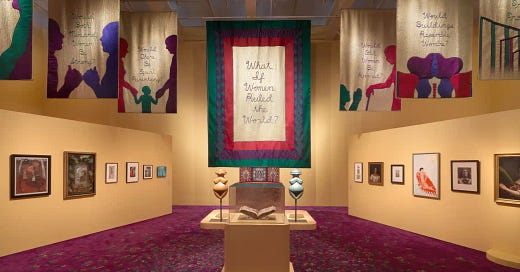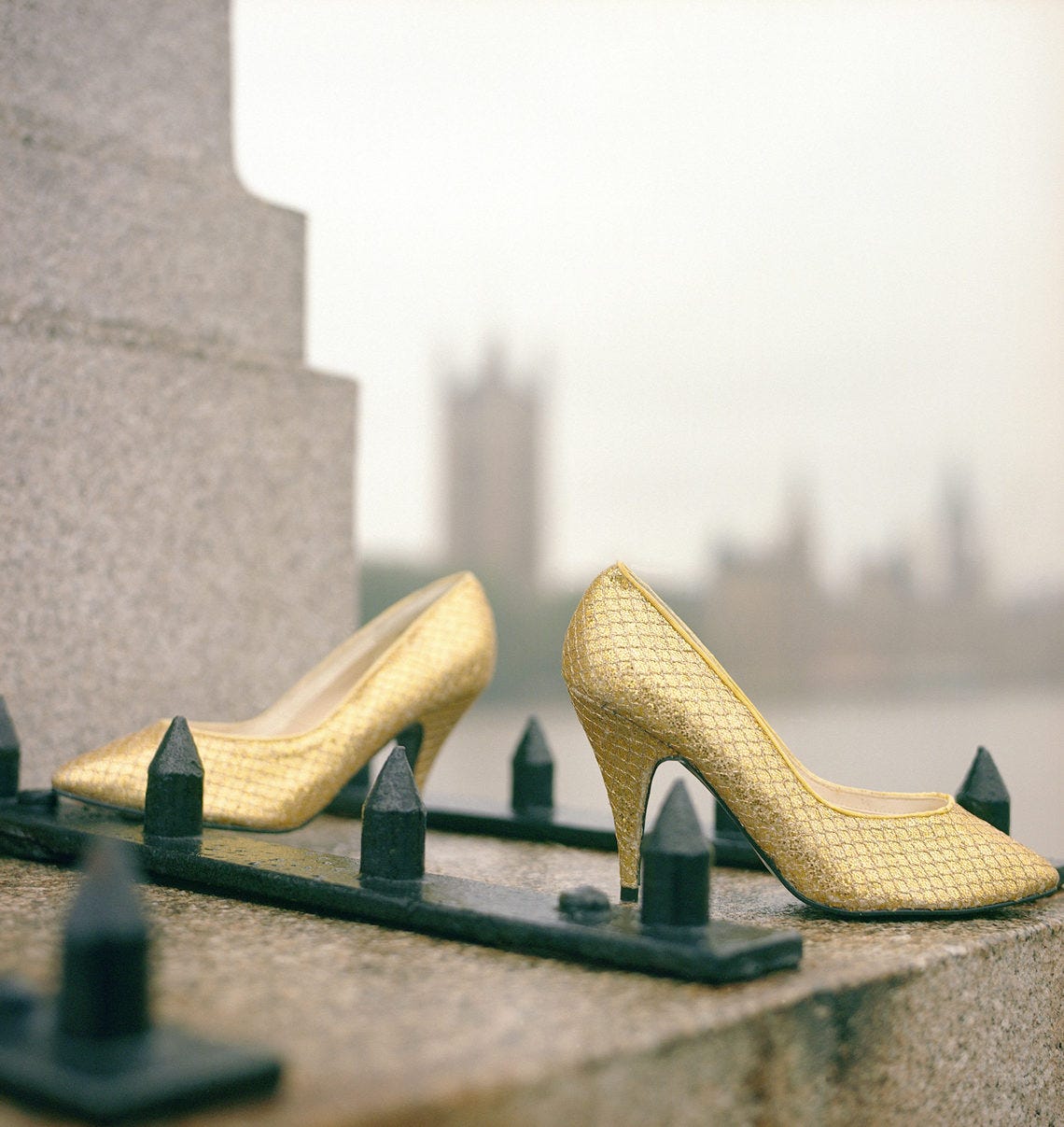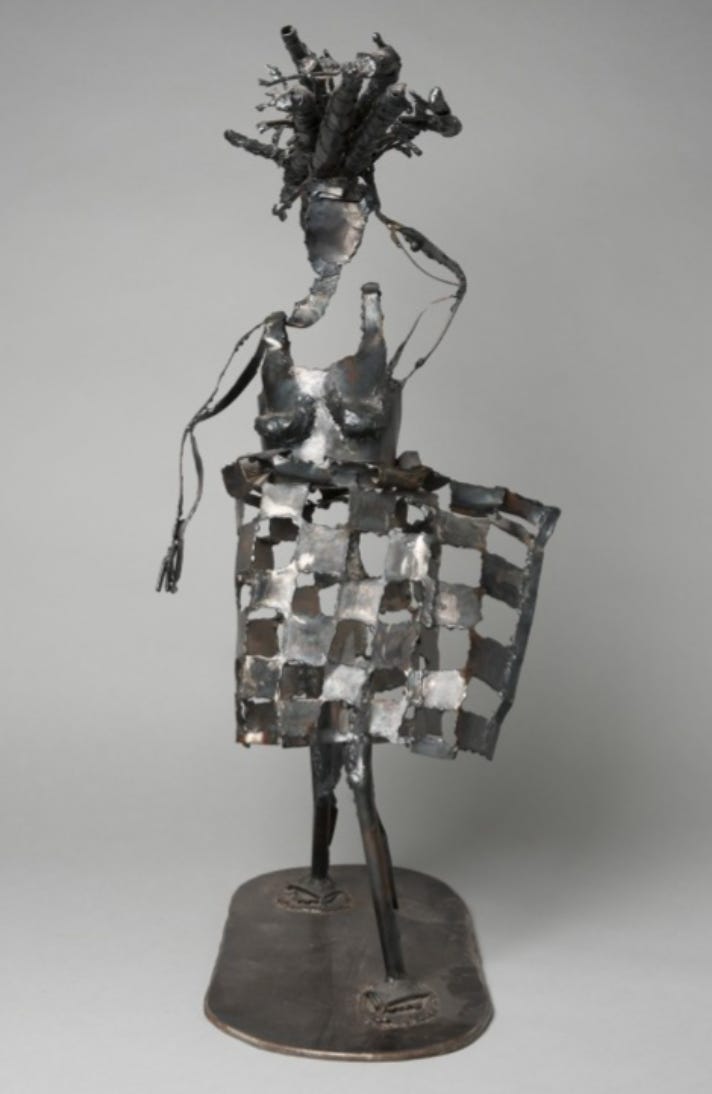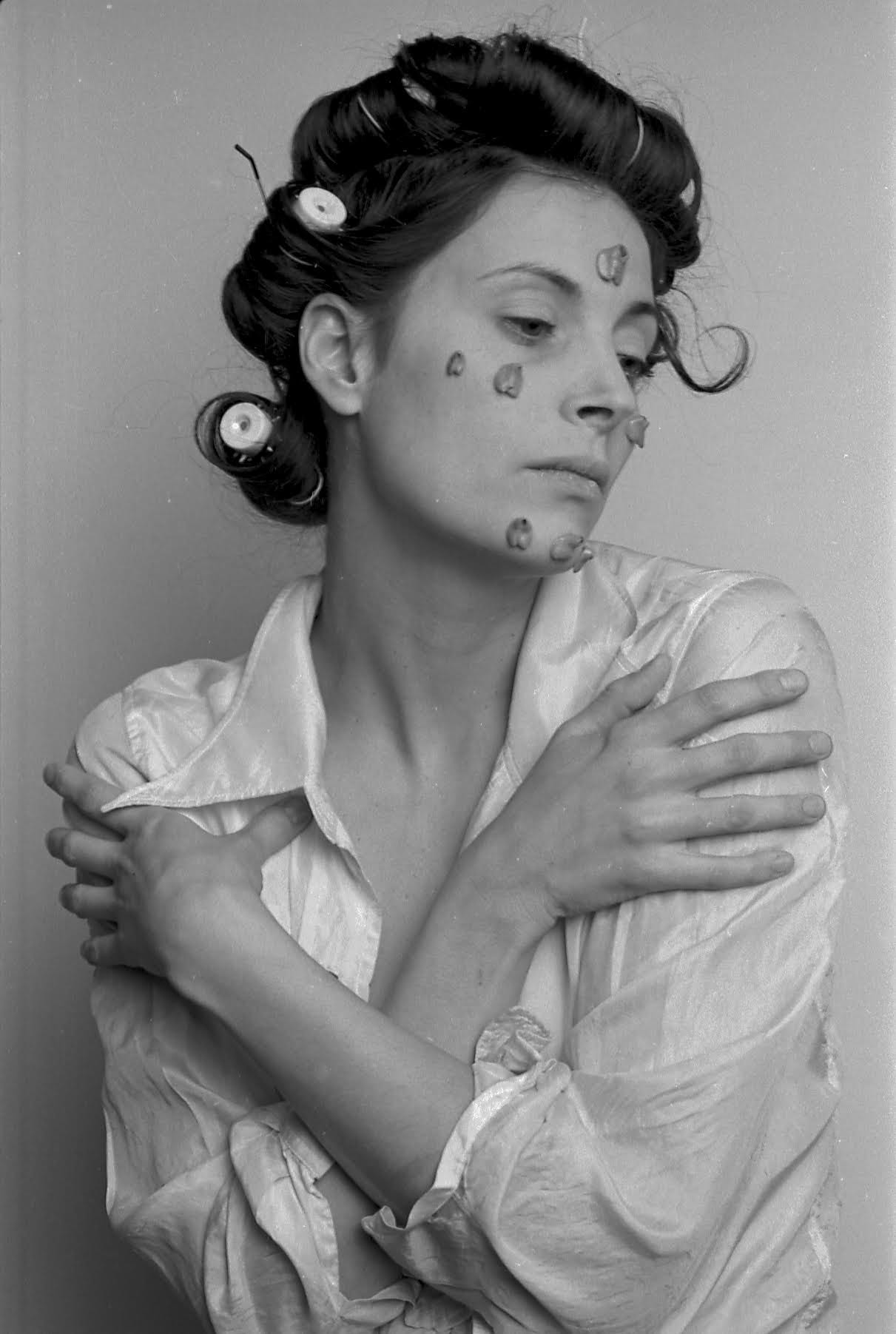GWA Newsletter: November
Our Barnes & Noble window; Judy Chicago's flags; Marina Warner on stories; Louise Nevelson on wood; and all the art you need to see, read and listen to this month!
Dear Great Women Art Lovers,
I hope you are all well. Coming to you from sunny DC, where yesterday I spoke at the newly refurbished National Museum of Women in the Arts!
Over the last few weeks, I’ve been writing, podcasting and criss-crossing Canada and the US, talking all things GWA. Tomorrow, I head to San Francisco to speak at the ICA. Here’s a rundown of things I’ve been up to:
Some exciting news: The Story of Art Without Men is a finalist for Barnes & Noble Book of the Year. Get your copy!
For those in NYC: Don’t miss our window display at Barnes and Noble’s Upper West Side store, featuring all things books without men. From Fran Lebowitz to Tracey Emin; Sofia Coppola to Madonna. Plus, art by Shirin Neshat, Flora Yukhnovich, María Berrío, Amy Sherald, and Deborah Roberts. Check it out + watch a video here!
The Booker Prize asked me to pick my favourite works of female writers in the National Portrait Gallery’s collection. I chose Iris Murdoch, Mary Shelley, Jeanette Winterson, Emily Brontë and Zadie Smith. Watch now:
This week for The Guardian, I wrote about Judy Chicago’s tapestries, embroidered with questions such as What If Women Ruled The World?, which currently hang above 500 years of art by women – from Artemisia Gentileschi to Frida Kahlo – at her exhibition, Herstory at the New Museum. Read now + a preview:
“If women ruled the world, would galleries be more equal? How different would history look? With so much of our image-saturated culture stemming from the dominance of European painting and the gender and class roles it has perpetuated, would women in charge mean a more balanced, more nuanced society, with women no long always the object and men not always the author?
… Chicago covers so much rich ground, form how we treat one another to how we treat the planet. Yet, as with all her work, the aim is not for a dominating matriarchal culture, but rather an equitable one.” Read more.
Series 10 of The Great Women Artists Podcast is underway! The last two weeks have featured two incredible guests, the first being the indefatigable Marina Warner. In this episode, we spoke about the representation female subjects and figures across art history: Eve, Lilith, Athena and Medusa:
On stories and the framing of Eve:
“We can leverage stories to work for us – that’s what artists are doing. Visual artists, literary artists, musicians; they are looking at the material that we’ve come framed by, and they are giving it another inflection.
In the case of Eve, this has happened over several thousand years, she has been re-inflected by a lot of thinking. She was seen as the gateway to the devil, a dreadful, wicked woman who had betrayed humanity, given Adam the apple to eat, and that he was quite right when he said to God, it’s her fault she gave it to me to eat…”
And how this has changed:
“…gradually, that has changed. A lot of poems and paintings have seen Eve as the gateway to knowledge. She’s the one who doesn’t acquiesce to this idea that there’s a ban on them knowing the difference between good and evil. She’s the spirit, if you like, of the Enlightenment. The spirit of rebellion and desire and freedom.” Listen now.
For episode three, I also spoke to Professor of Art History at Columbia University, Julia Bryan-Wilson on the trailblazing Ukrainian-born sculptor working in mid-century NYC, Louise Nevelson (1899–1988):
On becoming a sculptor:
“She said very early on, of how she came to be an artist. She decided she wanted to be a sculptor, in part, because she didn't want colour to help her. She wanted to go to form and dimension and being – as she called it – an ‘Architect of Light and Shadow’.”
On the power of wood:
“One of the things why wood was such a touchstone is because of its warmth. It is a warm medium that expands and contracts with the environment. Even when it's not a tree, it breeds… it has a porousness. There is something very touchable about it. We live our lives often in very close proximity to wood.” Listen now.
OK! Here are your top cultural picks + exhibitions: NYC edition. Love, Katy. Xoxo
10 Shows in NYC
Jenna Gribbon: The Honeymoon Show! at Lévy Gorvy Dayan (until 6 Jan 2024)
Katherine Bradford: Arms and the Sea at Canada NYC (until 22 Dec)
Deborah Roberts: What about us? at Stephen Friedman Gallery (until 22 Dec)
Tracey Emin: Lovers Grave at White Cube (until 13 Jan 2024)
Judy Chicago: Herstory at New Museum (until 14 Jan 2024)
Young Elder (Anna Calleja, Jorge K. Cruz, Onur Gökmen, Igor Moritz, Grace Rosario Perkins, and Elsa Rensaa) at James Fuentes (until 25 Nov)
Hilary Harkness: Prisoners from the Front at PPOW (until 11 Nov)
Dana Schutz: Jupiter’s Lottery at David Zwirner (until 16 Nov)
Pipilotti Rist: Prickling Goosebumps & a Humming Horizon at Hauser & Wirth (until 13 Jan 2024)
Barbara Chase-Riboud: The Three Josephines at Hauser & Wirth (until 23 Dec)
12 Things to Listen To
Dolly Alderton on Annie Macmanus: Changes
Hilton Als on City Arts & Lectures
Zadie Smith on City Arts & Lectures
Gilbert and George on This Cultural Life
Eras: The Beatles via BBC Radio 2
Normal Women with Philippa Gregory
History of Ideas with David Runicman on Susan Sontag’s Against Interpretation
Ingrid Pollard, Marlene Smith, Joy Gregory, Anthea Hamilton, Alberta Whittle and Beverly Bennett on Living Archives Podcast by the Stuart Hall Foundation
The Legacy of Ruth Asawa on Dialogues
Veronica Ryan on Sculpting Lives
Claudia Winkleman on How To Fail
Lauren Elkin and Vanessa Patterson on the LRB Podcast
11 Things to Read
Haruki Murakami: What I Talk About When I Talk About Running
Jen Beagin: Big Swiss
Carmen Maria Machado: Her Body and Other Parties (a short story collection)
Emily LaBarge on Alice Neel in the LRB
Octavia Bright: This Ragged Grace
Eula Biss: Having and Being Had. You can read preliminary writing for the book on Granta.
Claire Keegan: So Late in the Day
Emma Dabiri: Disobedient Bodies
Margo Jefferson: Constructing A Nervous System
Olivia Laing on Janine Wiedel’s protest photos via The Guardian
Phillipa Perry: The Book You Want Everyone You Love* To Read (And Maybe A Few You Don’t)
5 Artists You Should Know
Joy Gregory (b.1959)
A trailblazer in British photography, Gregory has a painterly approach to her medium, and roots her subjects in fashion, flowers, and girls.
Firelei Báez (b.1981)
Taking inspiration from Dominican folklore and historic maps, Báez remaps histories of colonialism and points toward possible futures. Her sensual, luscious and virtuosic brushstrokes make up mythical figures.
Sokari Douglas Camp (b.1958)
I am in awe of how Douglas Camp manages to meld steel into sculptures with such tenderness. Her work often relates to the destruction of the Niger Delta, where she grew up.
Doris Salcedo (b.1958)
Salcedo’s large scale sculptures are as poignant and necessary today as they have ever been. She puts into visual form a collective mourning, and gets us to question borders and danger, violence and immigration, the silenced and the powerful, the excluded and the included.
Hannah Wilke (1940-1994)
Wilke used the body as her subject and her medium, and covered it in tiny labial sculptures made from chewing gum (for me, a symbol of Americanisation). She said in 1980: ‘I chose gum because it’s the perfect metaphor for the American woman – chew her up, get what you want out of her, throw her out and pop in a new piece.’
That’s it from me! Happy GWA’ing. Thank you for reading this Substack. If you think someone else might enjoy this too, please spread the word and share this article. If you have any feedback, please comment below.



















Hello, Thank you for mentioning my aunt Hannah Wilke. Do you write about her in your new book?
Loved Gilbert and George on This Cultural Life -made me laugh out loud many times. So intelligent and erudite and the way they have each other’s backs is so heartwarming too.
A wonderful book to add to your reading list is Sharon Blackie -Hagitude -its pure power reading about female ageing.